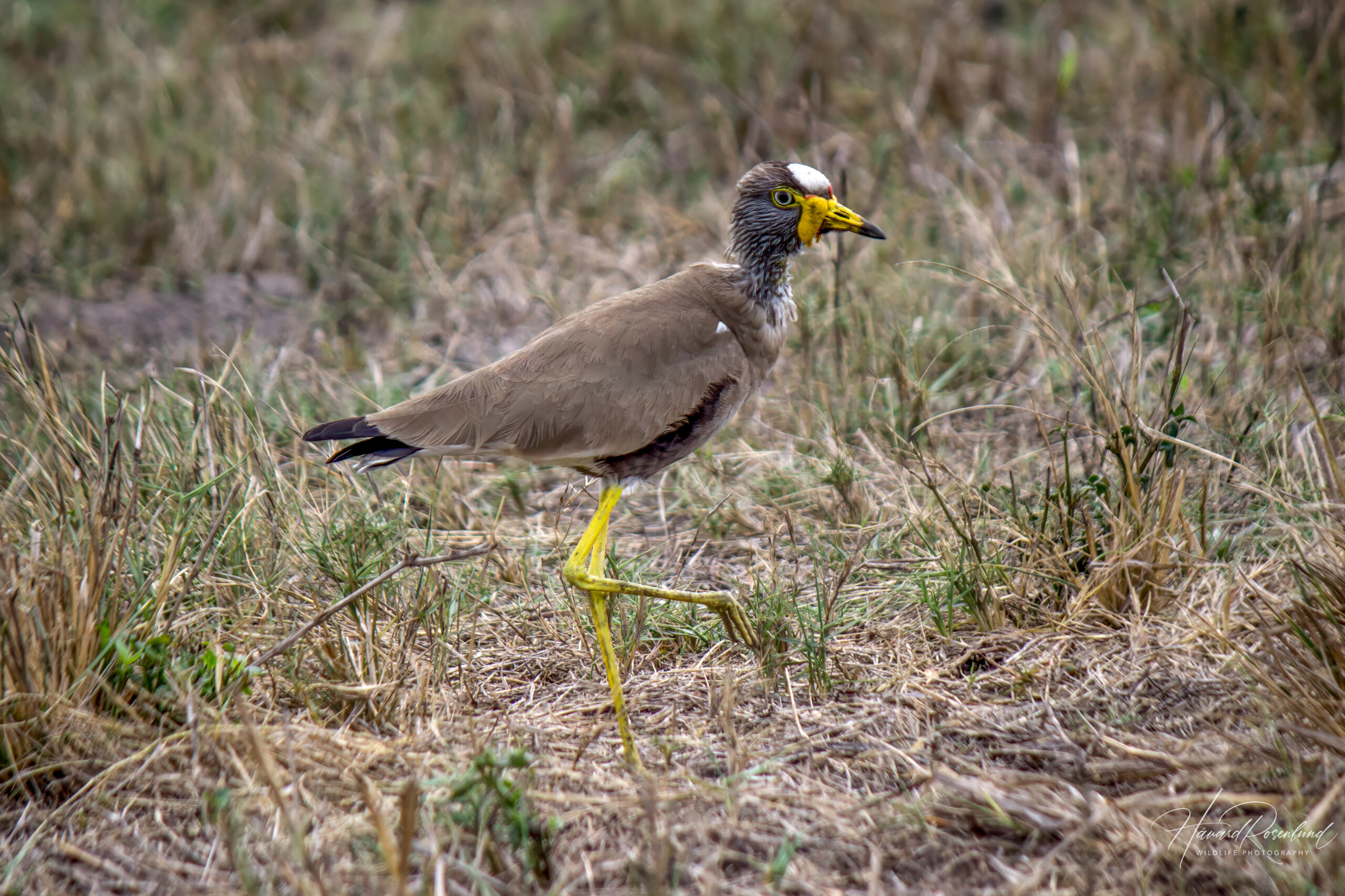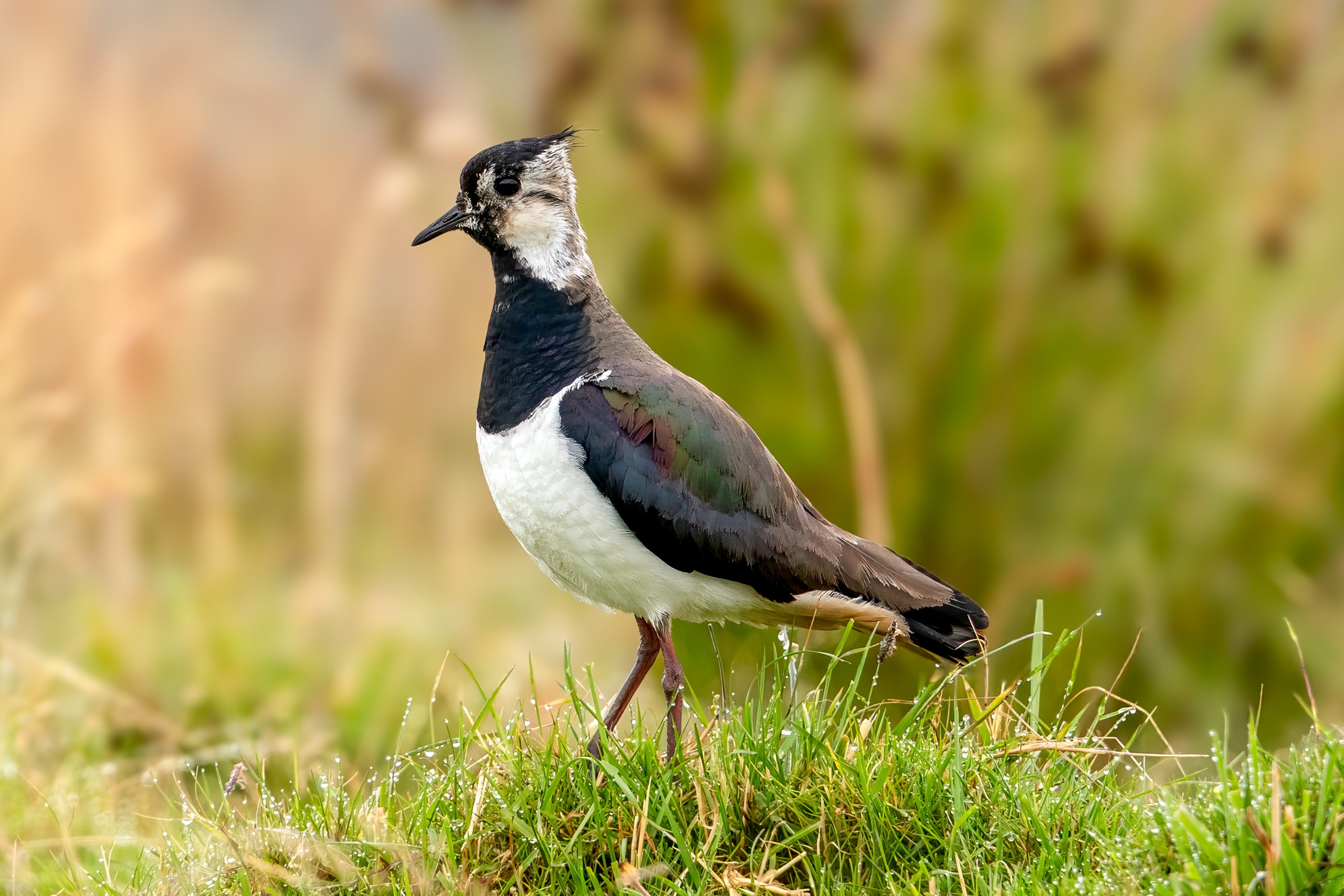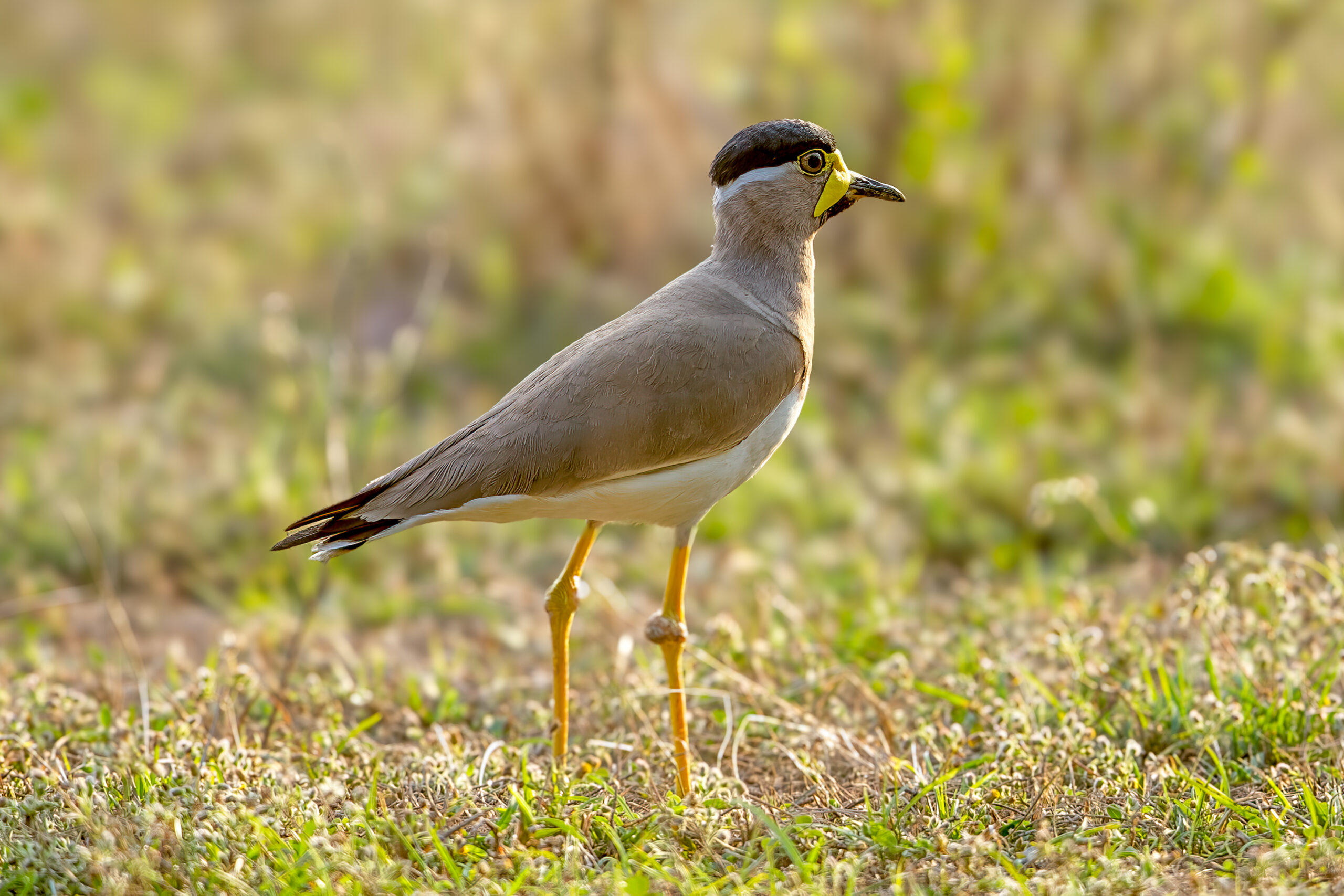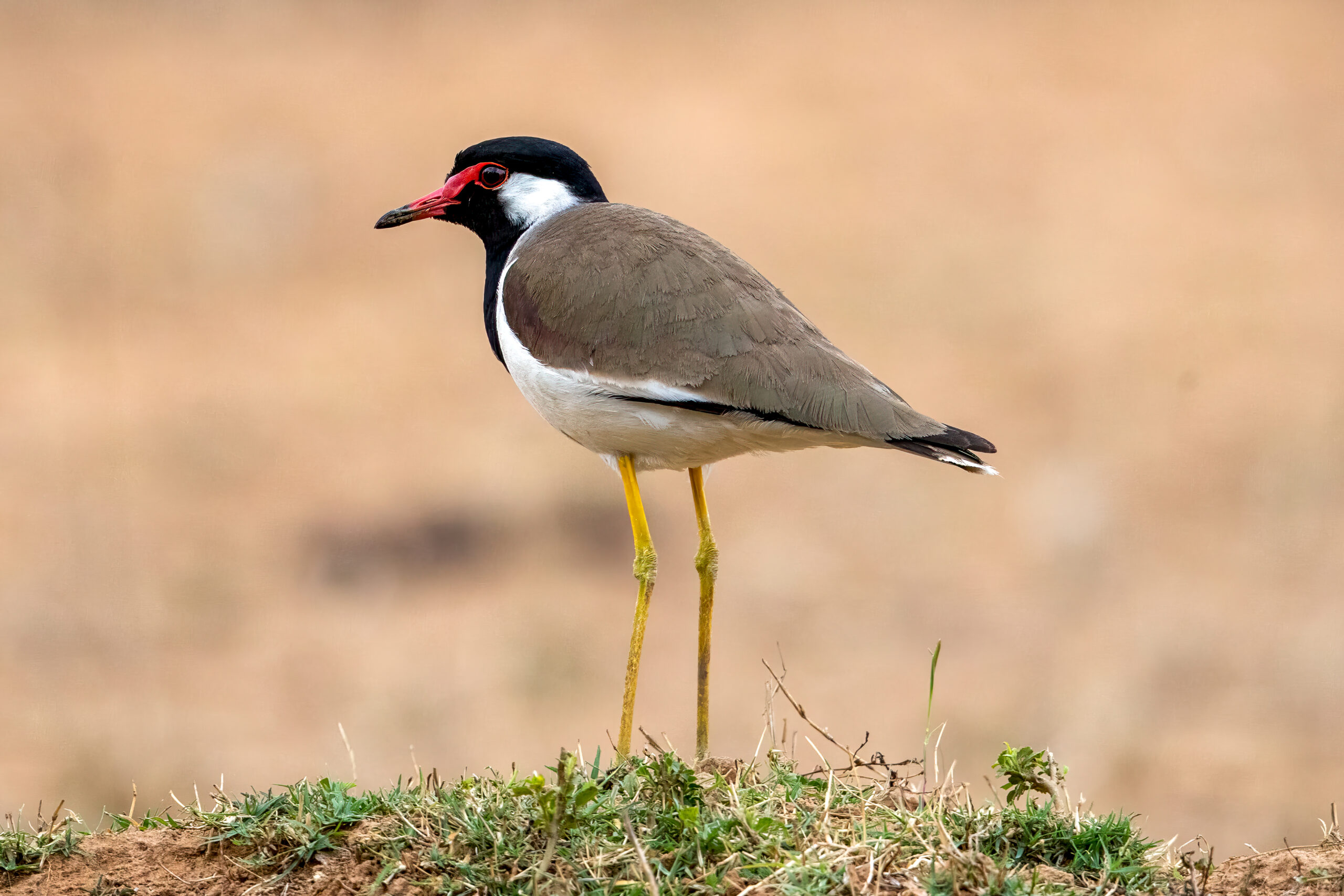Description
The wattled lapwing (Vanellus senegallus) is a large and widespread species of lapwing in sub-Saharan Africa. It reaches a length of 34 cm (13.5 in). It is easily recognized with its bright white forehead, yellow legs and beak and the obvious yellow wattle on the face. Body is uniformly brown, and neck and face is streaked. In flight the upper side of the wings shows black flight feathers and brown wing coverts separated by a white band. Undersides of the wings are white with black edges.
Diet & habitat
The wattled lapwing prefers open and moist areas, such as marshes and swamps, and grasslands next to rivers and lakes. It can also be found on cultivated land and golf courses. Diet consists almost exclusively of insects, but it does occasionally eat seeds. Foraging is done on the ground as it walks slowly while looking for potential prey.
Behavior & movement
Wattled lapwings are resident while breeding but might move across distances during the rainy season. They are territorial and monogamous nesters, and males defend their territory strenuously against intruders. Males can be quite aggressive towards one another early in the breeding season, striking each other in flight with their wings. As the season continues, they tone it down and keep to calling and posturing to fend of intruders.
Nesting
The male creates several shallow scrapes on the ground, one of which the female will choose to lay her eggs in. When the female has chosen a nest, they will line it with grass, roots, pebbles, and dry dung. 2-4 cryptically colored and well-camouflaged eggs are laid and incubated by both sexes for 28-32 days. The chicks leave the nest within the first 24 hours but will be always tended by at least one parent for the next 40 days. Chicks will not leave the family group until the next breeding season.
Status
The wattled lapwing has a large and widespread distribution and is very common in many areas. It may even have benefited from human alterations in its natural habitat. It is not threatened, and it is listed as least concern on the IUCN Red List.







